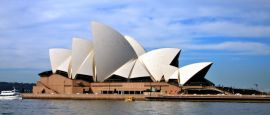Sydney History
Once a penal colony, Sydney is now one of the world’s most desirable places to live. It was founded in 1788, when the first British fleet of 1,000 settlers (most of whom were convicts) docked on Australia’s shores.
With their superior weapons, the Europeans swiftly set about dispossessing the indigenous population. However, their greatest ally was disease and the local Aboriginal community was devastated by smallpox.
At first, droughts and disease caused widespread problems, but the situation soon improved and Sydney was incorporated (given a corporation and mayor) in the 1840s.
As the city grew, new buildings were erected with the Sydney Observatory, the Australian Museum, Sydney Town Hall and the Queen Victoria Building all going up in the 1850s. This development coincided with a gold rush in the mid-19th century, which brought yet more settlers.
When the Commonwealth of Australia was inaugurated in January 1901, Sydney became the capital of the Australian state of New South Wales, and industrialisation saw the city expand rapidly.
However, the Great Depression hit Sydney hard and put a pause on its growth for a number of years. It didn’t stop everything though, and it was during this time that the iconic Sydney Harbour Bridge opened in 1932, connecting the city’s northern and southern banks. It took 1,400 men eight years to complete.
After WWII, Sydney continued to expand and various waves of European and Asian immigration resulted in a melting pot of cultures. From the 1960s, new skyscrapers started to pop up, with the iconic Opera House following in 1973.
More recently, the 2000 Sydney Olympics brought a further boom, both in tourism and immigration, as those watching the action fell in love with the city. Now one of the world’s most popular tourist destinations, millions flock to its shores each year.
Did you know?
• Before the ribbon could be cut to open the Sydney Harbour Bridge, Captain Francis De Groot sliced it with his sword because he believed that a member of the Royal Family should officially open the bridge rather than the New South Wales Premier, John T. Lang. De Groot was arrested, the ribbon was re-tied and Lang went on cut the ribbon officially.
• Sydney’s George Street is the oldest street in Australia.
• The Australia Day Regatta, which was first raced in 1837, is the oldest sailing regatta in the world.
Do you have any Feedback about this page?
© 2025 Columbus Travel Media Ltd. All rights reserved. No part of this site may be reproduced without our written permission, click here for information on Columbus Content Solutions.




 You know where
You know where